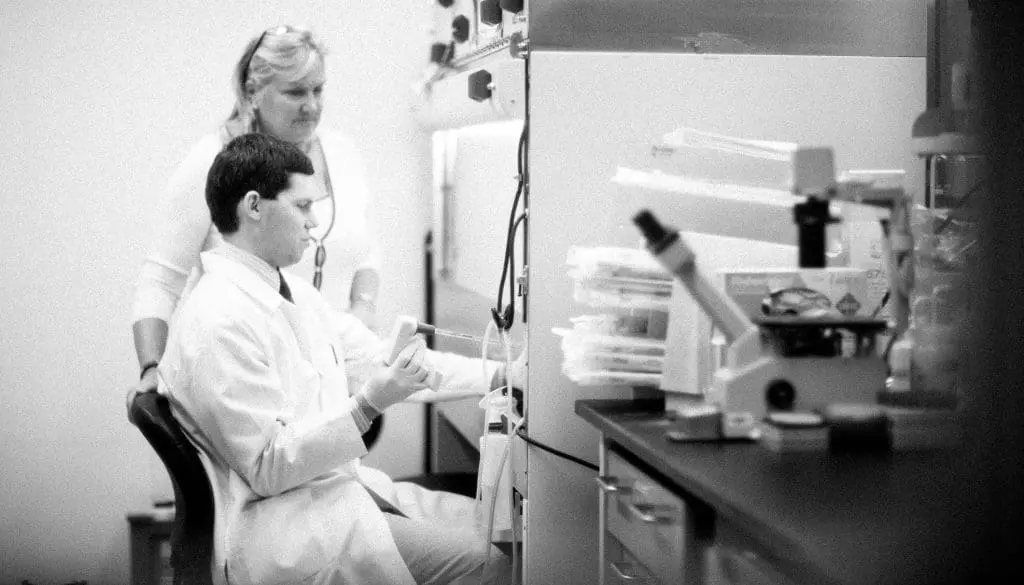
Below are a series of interview videos and transcripts in which several prominent researchers into fibrolamellar outline their experiences and scientific interest in the disease. Each of these researchers is currently actively conducting research sponsored by the Fibrolamellar Cancer Foundation.
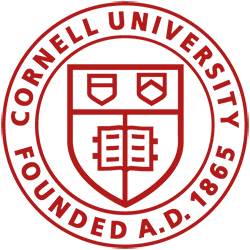
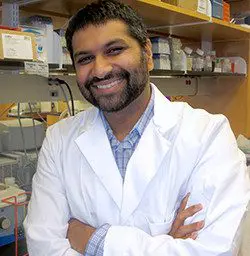
Praveen Sethupathy, PhD is is an Associate Professor of Biomedical Sciences and Director of the Center for Genomics at Cornell University, where he directs a research lab focused on genomic approaches to understand human health and disease. As a FCF-funded researcher, Praveen Sethupathy and his team at Cornell University recently published a paper that discusses how they leveraged a novel genomics technology to uncover therapeutic vulnerabilities in fibrolamellar carcinoma. Praveen is a Scientific Advisor to FCF.
Below is an interview with Praveen conducted by the Rare Disease Report in which he discusses advancements in fibrolamellar research.

The following is a transcript of an interview with two key FCF researchers at the Duke School of Medicine – Anna Mae Diehl, M.D., Florence McAlister Professor of Medicine, Division of Gastroenterology and Hepatology and Cynthia Guy, M.D., Associate Professor, Department of Pathology.
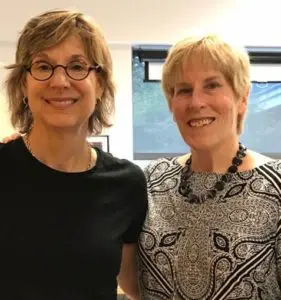
FCF asked our researchers to tell us about their lives and how it lead to their careers, including their interest in fibrolamellar. We crafted a series of questions which Anna Mae and Cindy answered.
1) Tell us about your early years: (e.g. birthplace, family, interesting things you did)
- Anna Mae – I grew in northern Virginia in what was, at the time, a sleepy remote suburb of Washington, DC. My dad worked in DC and my mom was a stay-at-home mother. I have a sister and brother and a large extended family on my mom’s side (she has 6 brothers and sisters and so I have many cousins) who lived in the area. My sibs, cousins and I grew up together, enjoying lots of outside play. I was always active in sports – softball, basketball, swimming, biking and track. By high school, I was running middle distances at a fairly-competitive level in American Athletic Union-sanctioned events. Most of the kids who knew me growing up probably remember me for my athleticism based on my successes in track, and later, as a marathoner.
- Cindy – I was born and grew up in western North Carolina in a small town, Franklin, west of Asheville. Both of my parents are still living. My dad is 84 years old and still takes care of more than 10 acres of garden and lawn. My mom is also still healthy at 77 years old. I loved growing up there; the “great outdoors” was constantly beckoning me. I was an avid hiker and cyclist from as early as I can remember.
2) Who influenced you the most during your childhood?
- Anna Mae – I think my parents – my dad coached some of my teams and was always in the stands when I competed. My mom supported my doing all those competitive sporting things that “proper” girls weren’t supposed to be doing at that time in history, but never let me get “too big for my britches”.
- Cindy -I think my close-knit childhood friends who lived just down the street had the greatest impact on my early years. We were constantly building forts or tree houses or pathways and jumping ramps for our skateboards. We were fearless and lived a life of adventure (at least in our young minds).
3) When you went to college, did you have an idea what you wanted to do for a career?
- Anna Mae – Not a clue. In fact, my parents were not keen on having me attend college due to the expense. As a result, I lived at home, took out college loans, and tried to help pay the tuition costs by working the late night shift as a supermarket cashier. I started college as an economics major (because my grandfather had been an economist, this was considered to be an acceptable career path) but quickly realized that I loved biology when I took a freshman bio course. I switched majors from econ to bio in my junior year, hopelessly behind and out-of-sync with all the other bio majors, most of whom were on a pre-med track. I credit the fact that I had so little education in the bio field, and that this forced me to reason through problems, with my present love of science.
- Cindy – I always thought I wanted to be a physician, although I really had no idea how demanding and time-sapping it would be.
4) Why did your specialty interest you?
- Anna Mae – I like difficult problems and quickly realized that not much was known about even very common liver diseases as I struggled to take care of patients with alcohol-related liver diseases early in my medical training. I was inspired by Dr. Willis Maddrey, a senior hepatologist and superb internist whom I met when I was starting my internship at Hopkins. In addition to being a model physician, Dr. Maddrey was leading clinical trials in alcoholic hepatitis and had formed teams of collaborators who were tackling the disease from different angles. He encouraged me to get involved in research and to pursue further training in liver disease way back then, and continues to be one of my most valued mentors even at this late stage of my career.
- Cindy – I love looking at cells. I love thinking about how individual cells interact and work together to form tissues and organs. Surgical Pathology is unique in medicine in that during our daily work lives, we spend an enormous amount of time looking into the face of disease on a cellular level. I constantly feel “fascinated” by the human body and how it functions and unfortunately malfunctions.
5) What’s been the most interesting case/study you’ve worked on?
- Anna Mae – Trying to figure out why cirrhosis and liver cancer develop in an adult organ that ordinarily has the best capacity of any tissue in the body to regenerate itself after injury. To solve this puzzle, we need to better understand the mechanisms that control effective liver regeneration and then figure out which one(s) of these become dysregulated to cause cirrhosis or liver cancer. Once we know this, we should be able to develop treatments that will “correct” the defect(s) to optimize effective repair and thus, reduce a patient’s chance for developing cirrhosis or liver cancer.
- Cindy – One of the most rewarding projects I’ve recently been involved with entangled me with a graduate student in Anna Mae’s Lab. He had in depth knowledge of several basic science techniques for which I was lacking, and I had in depth visual histopathological skills for which he was lacking. As collaborators, we synergized. The resulting hepatocellular carcinoma paper documented how Hedgehog signaling regulates hepatic stromal cell metabolism in order to provide fuel to the neighboring carcinoma cells (“the reverse Warburg effect”), and our findings helped propel him towards completing his PhD.
6) Why is fibrolamellar carcinoma of interest to you?
- Anna Mae – This is a devastating disease for which there is no known treatment and so somebody needs to figure out why it occurs so that treatments can be developed to prevent and/or reverse it. Based on the characteristics of the cancer, I suspect that some of the repair-regulatory pathways that we have been studying are defective in fibrolamellar carcinoma. I hope that we can leverage this knowledge to expedite progress towards a cure of this disease.
- Cindy – Fibrolamellar carcinoma is a unique type of cancer that unfortunately strikes during the most exciting and joyous time of life, late adolescence and young adulthood. We know in general that tumor cells send and receive vital signals to and from the surrounding stroma. FLC’s stroma is remarkably bold and conspicuous, and seems to be the ideal target for dissecting viability and self-propagation pathways. The signaling pathways used by FLC may represent common signaling networks used by other types of tumors.
7) Do you see any promising discoveries on the horizon for fibrolamellar?
- Anna Mae – Yes, I believe that emerging technologies are enabling researchers like us to better understand how the many different types of cells in the cancer interact with each other to perpetuate the survival of the malignant cells. This knowledge should identify novel targets that can be attacked to disrupt the cancer nurturing environment and thereby, improve current abilities to kill the malignant cells.
- Cindy – As the FCF continues to grow and the number of illustrious participating institutions increases, I believe that breakthrough discoveries will be forthcoming soon.
8) What advice do you have for FCF to get more top MD’s and PhD’s involved in our mission to find a cure?
- Anna Mae – Continue to encourage truly collaborative science and fund innovative projects. Your efforts to increase awareness about this type of cancer, and the need for resources to fund more research to develop cures for the disease, will attract philanthropic support that is essential to fund this work and keep the field moving forward in times of tight NIH budgets.
- Cindy – We feel so lucky at Duke because we have alumni like Leslie Graves (FYI Leslie is FCF’s treasurer and board member!) Leslie worked tirelessly and was fearless of each and every bureaucratic hurdle. She has been a steady and powerful advocate for us and helped propel us through all the institutional “red tape”. Raising awareness of funding opportunities through connecting the alumni community to researchers worked well for us.
9) In your opinion, how can the FLC patient community help in accelerating the road to the cure?
- Anna Mae – Patients are the most effective advocates for effecting policy change that might redirect resources to grow research about this rare cancer. I would encourage them to meet with their elected officials and spread the word among their neighbors and work colleagues – never know who might become inspired to donate time/money to advance this cause.
- Cindy – When we were first introduced to FCF, I had the opportunity to meet an FCF patient and visit with him for the day. I really enjoyed being around him and showing him around Anna Mae’s Lab. I think taking the disease “out of the text book” and into a “real life experience” makes a powerful and long-lasting impact.
10) Is there any specific award, accomplishment or passion (from any time in your life- personal or career) you think our readers would find interesting to know about you?
- Anna Mae – I’m a grandmom and shamelessly crazy about my three young granddaughters (a set of twins who are about a year and a half old and another little girl who is almost two) and very excited to be welcoming a fourth grandbaby in a couple of months. It is a true blessing to “re-see” the world through their eyes – puts everything in perspective and re-enforces my sense of wonder about life!
- Cindy – I am passionate about cycling. I love road, mountain, or cyclocross. I enjoy being outdoors with my friends and trying to stay fit.

Ghassan Abou-Alfa, MD is a gastrointestinal oncologist, specializing in primary liver cancer, pancreas, gallbladder, and bile duct tumors. His research focuses on improving the effectiveness of cancer therapy by incorporating small novel biological molecules that target cancer into the treatment of chemotherapy-resistant gastrointestinal malignancies, particularly hepatobiliary and pancreatic cancers. He has been active in many clinical trials targeting fibrolamellar (see publications) and is a Scientific Advisor to FCF.
Below is an interview with Dr. Abou-Alfa by the Rare Disease Report in which he discussed what people can expect in the fibrolamellar space over the next several years.

The following is a transcript of an interview with FCF researchers Julien Sage, Ph.D, Professor of Pediatrics (Hematology/Oncology) and of Genetics, and Garry Coles, Ph.D, Postdoctoral Research Fellow in pediatric cancer biology. They work out of the Sage Lab at Stanford Medicine. In addition to his research on fibrolamellar, Dr. Sage has served as a grant reviewer for FCF.
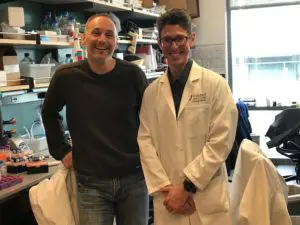
Why is fibrolamellar carcinoma of interest to you?
In many cases, the study of pediatric cancers has opened new research directions in adult cancers and has allowed the cancer community to develop new paradigms. The Sage Lab with Dr Sage and Dr. Coles as lead investigators have been interested in developing pre-clinical mouse models for pediatric cancers and FLC was an obvious candidate given the simple genetics and clinical relevance.
What is different about fibrolamellar than other cancers you’ve worked on?
FLC is quite different from a number of other cancer types because its biology is so new. We are only beginning to understand how the disease starts and we don’t know how it progresses. It’s a completely new field of research.
What is your lab currently working on?
We are working on two aspects of FLC. First we are developing a genetically engineered mouse model, which provides a defined, pre-clinical model to investigate FLC biology and test new therapeutic approaches. Second, we are investigating signaling networks downstream of the main oncogene in FLC, the protein kinase A fusion.
How does your research background benefit your work on FLC?
Our lab has a great deal of experience with mouse models of human cancers, including pediatric cancers and liver cancers. Additionally, several members of our group have expertise in studying human developmental disorders. We believe that a combined understanding of normal human development and pre-clinical cancer models helps us to understand both FLC tumor initiation and tumor growth.
Do you see any promising discoveries on the horizon for fibrolamellar?
It may be too early to say, again, a lot more research has to be done, but protein kinase A inhibitors, possibly in combination with other small molecule inhibitors of signaling kinases, may be really helpful.
What advice do you have for Fibrolamellar Cancer Foundation (FCF) to get more top MD’s and PhD’s involved in our mission to find a cure?
In our opinion, the FCF is doing a great job to bring researchers, clinicians, and patients together. The more people realize that FLC can serve as a model for many other cancer types and even non-cancerous disorders, the more people will study it.
In your opinion, how can the FLC patient community help accelerate the road to the cure?
One way in which the patient community may help research and translational studies is to help raise funds of course, but also by being involved in translational research efforts.
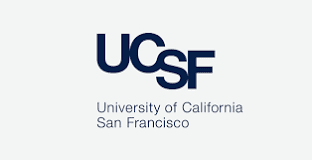
John Gordan, MD, PhD is a gastrointestinal oncologist, specializing in hepatobiliary cancers such as cholangiocarcinoma, hepatocellular carcinoma, and gall bladder cancer. Dr. Gordan was born and raised in New York City. He received his undergraduate degree in biochemical sciences from Harvard University in 2001. He then completed medical and graduate training at the University of Pennsylvania in 2009, followed by Internal Medicine residency and Medical Oncology fellowship at UCSF. Dr. Gordan joined the faculty at UCSF as Clinical Instructor in 2015.
Dr. Gordan is actively involved in the design and execution of clinical trails for patients with hepatocellular carcinoma and cholangiocarcinoma. His laboratory research focuses on identifying new therapies and predictive biomarkers for improved application of existing therapies for patients with these cancers.
Below is an interview with Dr. Gordan completed in 2019.
Here, Dr. Gordan describes some of his experiences in fibrolamellar treatment in a 2017 discussion with the Rare Disease Report.
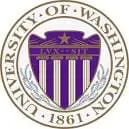
Dr. Scott is is the Edwin G. Krebs-Hilma Speights Endowed Professor for Cell Signaling and Cancer Biology at the University of Washington. He directs a research lab that investigates intracellular communication networks that promote specificity in signal transduction events. Dr. Scott received his Ph.D. from the University of Aberdeen, Scotland.
Below is an interview with Dr. John Scott, recorded in 2019.
